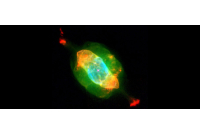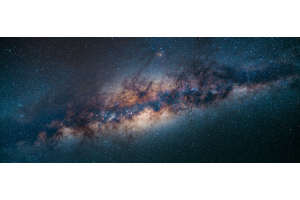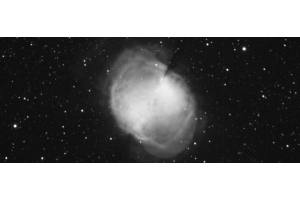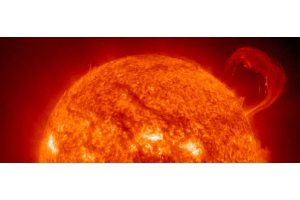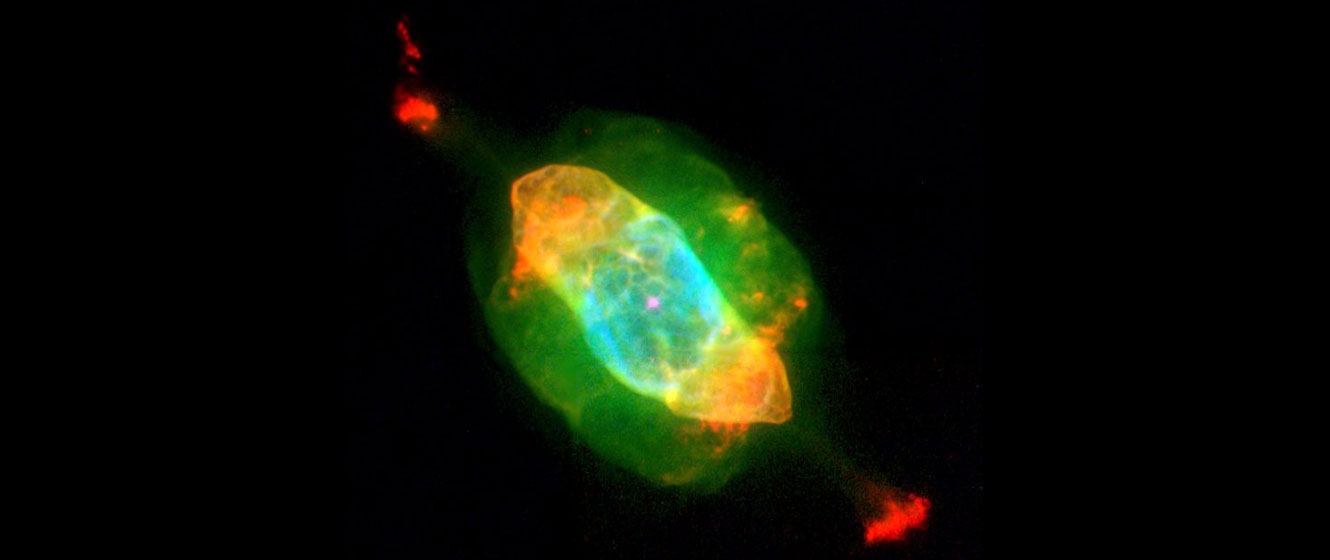
In this episode of What's in the Sky this Month, Teagan reviews some of the beautiful celestial objects you can see in the month of October 2022!
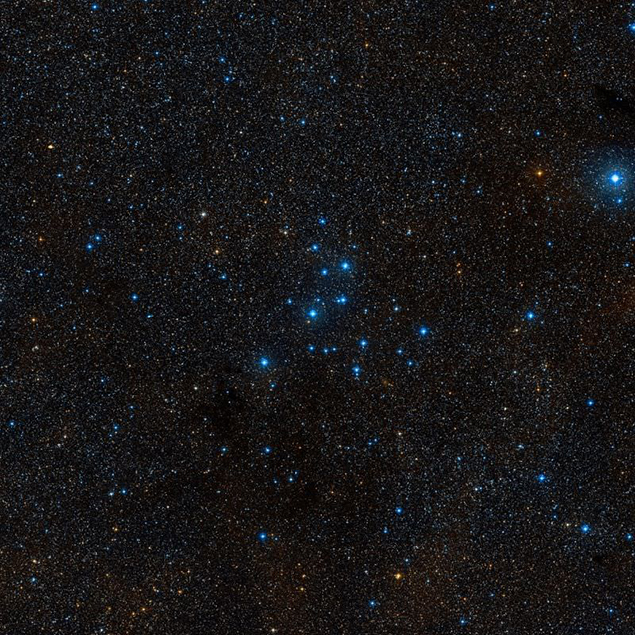
Image credit: Wikisky
Messier 39 (M39)
- Type: Open Cluster
- Constellation: Cygnus
- Distance: 1,100 light-years
- Magnitude: 4.6
- Apparent Diameter: 29’
While M39 is best observed in late summer, it can still be seen high over the horizon during the cooler autumnal months. It’s relatively bright, making it easily identified in binoculars, and lies just nine degrees to the northeast of Deneb. This puts it within two 10x50 binocular fields of that star, with the cluster being bright enough to be seen with the naked eye under dark skies.
Even with 8x42 binoculars, the cluster is large enough to appear elongated and resolvable into a smattering of blue-white stars. Its relatively large size also makes it an ideal target for small scopes, and a low magnification of around 35x will show a large, loose, triangular, and sparsely populated cluster. The stars themselves are almost entirely bright and blue-white, with a conspicuous double lying near the cluster’s center.
OUR NEAREST NEIGHBORS
Venus, typically the brightest planet, remains lost within the sun’s glare this month, but Saturn, the most distant and dimmest planet visible to the naked eye, can be seen throughout the evening. Look for a waxing gibbous Moon to its lower left on the 5th. Neptune, having reached opposition last month, is visible throughout the evening, but you’ll need binoculars to spot it among the faint stars of Aquarius. Jupiter, which also reached opposition last month, remains a brilliant golden sight in the evening sky. An almost full Moon hangs to its lower left on the 8th. Uranus is drifting through the barren southeastern quadrant of Aries, and like Neptune, will require binoculars to spot, but Mars is brightening and can be easily seen with the naked eye between the horns of neighboring Taurus, the Bull. A waning gibbous Moon appears just three degrees away on the 14th. Mercury makes an appearance in the eastern pre dawn twilight during the first half of the month, but there are no bright stars or Moon nearby to help you spot it. As for the Moon itself, it turns full on the 9th and then new on the 25th.
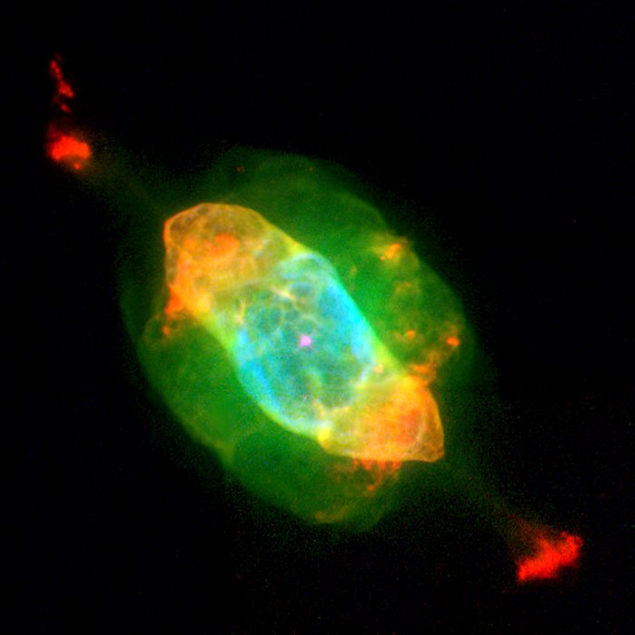
Image credit: NASA/ESA Hubble
NGC 7009 - The Saturn Nebula
While being situated in an area devoid of bright stars, the Saturn Nebula can be found within the same 10x50 binocular field as magnitude 3.8 Albali, aka Epsilon Aquarii. You’ll probably need a magnification of at least 100x to see the protrusions that give this planetary nebula its name.
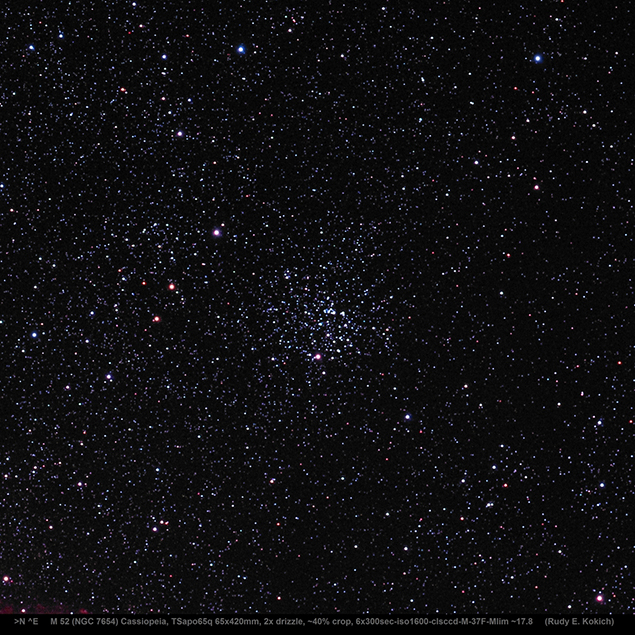
Image credit: Rudy Kokich
M52
Located in Cassiopeia, close to the border with Cepheus, a small telescope at low power will show this cluster as having a conical shape, with a bright yellowish star at its tip.
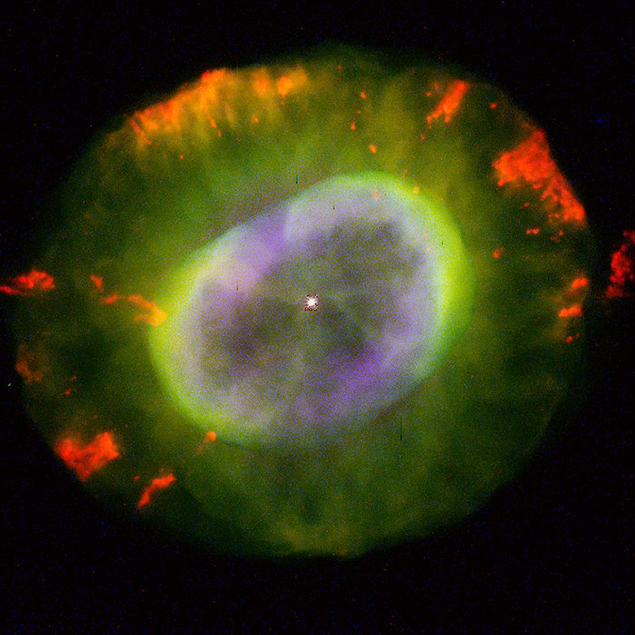
Image credit: NASA/ESA Hubble
NGC 7662 - The Blue Snowball
Another of the brighter autumnal planetaries, the Blue Snowball can be found close to Kappa Andromedae and appears as a bluish, almost perfectly circular disc.
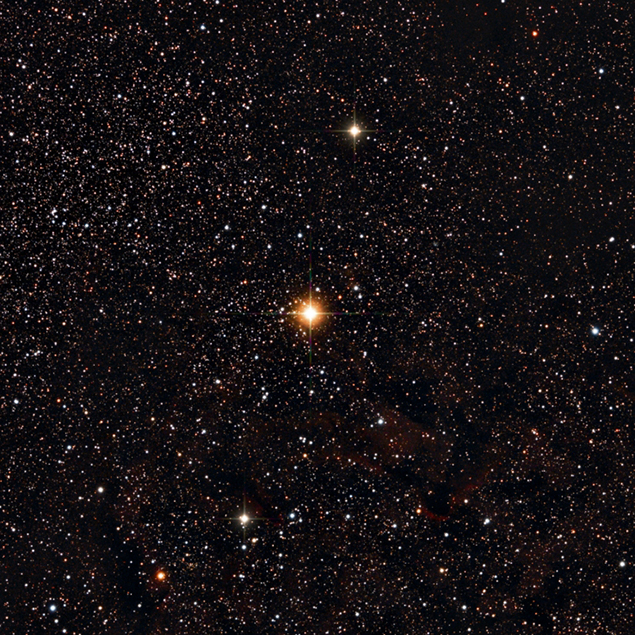
Image credit: Greg Parker
Mu Cephei
Also known as the Garnet Star, Mu Cephei has a strong, reddish color and is known to be a semi-regular variable. Its magnitude erratically ranges from 3.4 to 5.1 over a period of about 860 days.
STELLAR CONCEPTS
Planetary Nebula: This particular type of nebula is so-called because many will mimic the appearance of a planet when observed telescopically. They’re formed when a low-mass star nears the end of its life and sheds the outer layers of its atmosphere, like the skin of an onion. This shell of gas and dust then expands as it drifts away into space, eventually becoming large enough to be visible from Earth as a planetary nebula.
This Article was Last Updated on 07/20/2023

